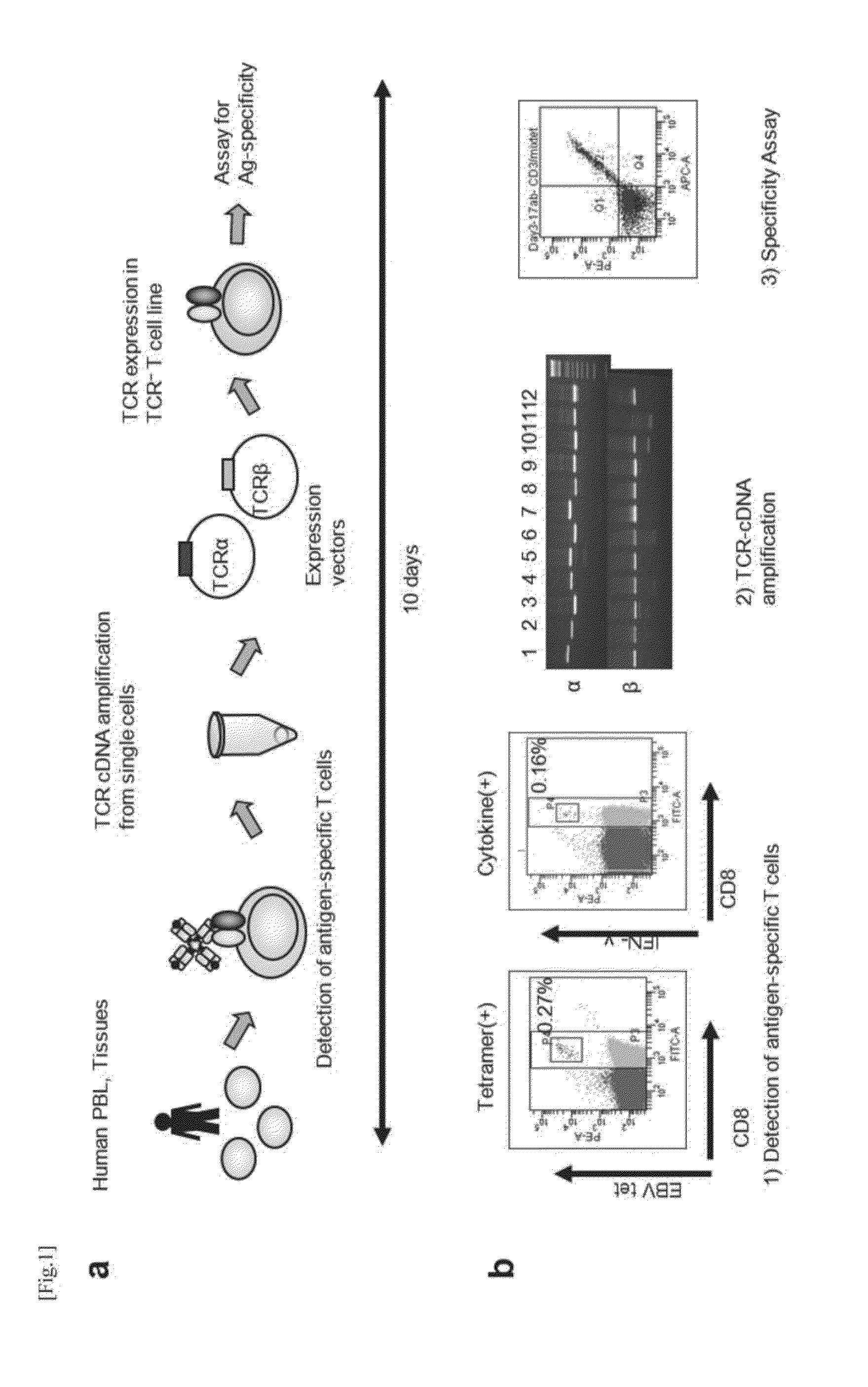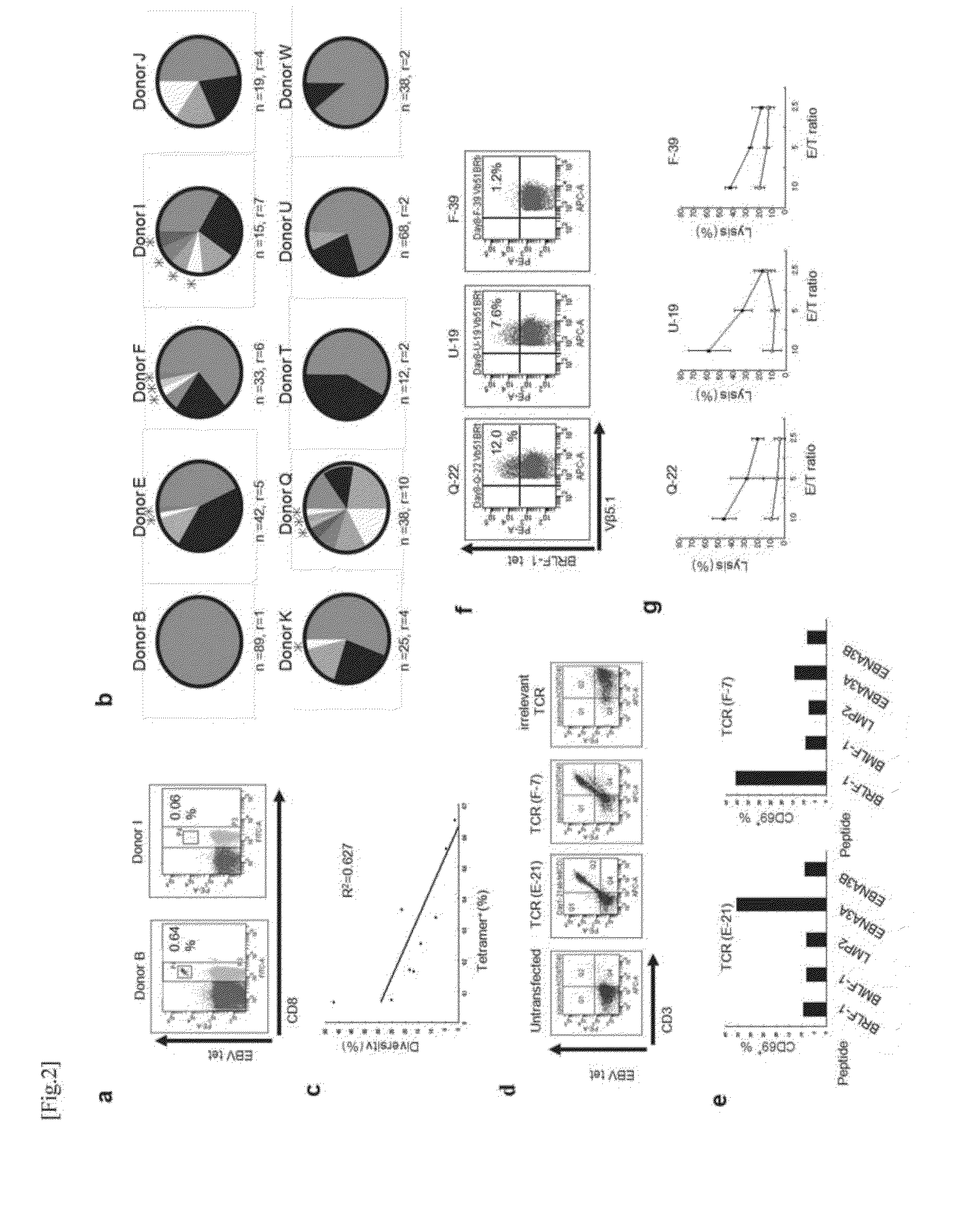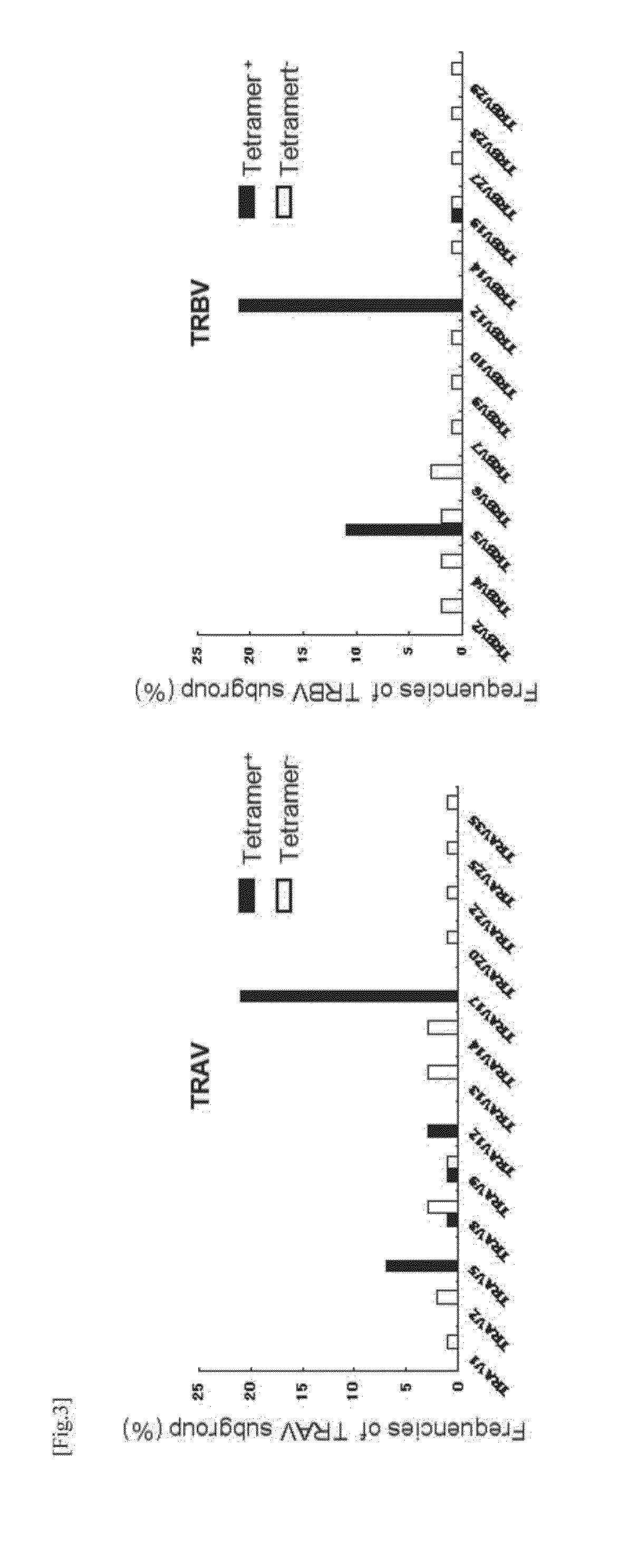Method for Cloning T Cell Receptor
- Summary
- Abstract
- Description
- Claims
- Application Information
AI Technical Summary
Benefits of technology
Problems solved by technology
Method used
Image
Examples
example 1
Methods
Healthy Donor and HLA Typing
[0065]Human experiments were performed with the approval of the Ethical Committee at the University of Toyama. Informed consent was obtained from all subjects. Peripheral blood lymphocytes (PBLs) were isolated from heparinized blood samples by density gradient centrifugation using Ficoll-Hypaque (Immuno-Biological Laboratories). Screening for HLA-A24 haplotype positivity was performed by staining PBLs with an anti-HLA-A24 antibody (One Lambda) followed by a FITC-conjugated anti-mouse IgG antibody (ICN / Capped) and analysis via flow cytometry.
Patients with Peptide Vaccination
[0066]The clinical trial (trial registration: UMIN000003514) using HLA-A24 restricted AFT357 (EYSRRHPQL, SEQ ID NO: 1) and AFP403 (KYIQESQAL, SEQ ID NO: 2) peptide vaccines was performed at Kanazawa University Hospital. Patients with verified radiological diagnoses of HCC stage III or IV were enrolled in this study. The patients each received 3.0 mg AFP-derived peptide vaccine pe...
example 2
[0103]Analysis of Amplification Ratio of an Antigen-specific TCR α / β cDNA Pair
[0104](1) Human PBLs were incubated as a population for two days in the presence of a stimulant (IL-2 and PHA, or IL-7 and PHA). Then, CD3-positive T cells were each sorted into a tube with a cell sorter, and subjected to RT-PCR. A sample of 10 μl obtained from each tube was subjected to electrophoresis using 1% agarose gel, and stained with ethidium bromide (EtBr). The results are shown in FIG. 8. The antigen-specific TCR α / β cDNA pair amplification ratios observed after culture for two days in the presence of the stimulant were 30 / 30 (100%) when the cells were stimulated with Il-2 and PHA, and 30 / 30 (100%) when the cells were stimulated with IL-7 / PHA. When the cells were cultured only with the medium (no stimulation) for two days, the amplification ratio was 17 / 30 (56.7%).
[0105](2) The cells were stimulated in the same manner as that of (1), but stimulated with IL-7 alone, or IL-2 and PHA, and the influe...
PUM
| Property | Measurement | Unit |
|---|---|---|
| Fraction | aaaaa | aaaaa |
| Time | aaaaa | aaaaa |
| Time | aaaaa | aaaaa |
Abstract
Description
Claims
Application Information
 Login to View More
Login to View More - R&D
- Intellectual Property
- Life Sciences
- Materials
- Tech Scout
- Unparalleled Data Quality
- Higher Quality Content
- 60% Fewer Hallucinations
Browse by: Latest US Patents, China's latest patents, Technical Efficacy Thesaurus, Application Domain, Technology Topic, Popular Technical Reports.
© 2025 PatSnap. All rights reserved.Legal|Privacy policy|Modern Slavery Act Transparency Statement|Sitemap|About US| Contact US: help@patsnap.com



